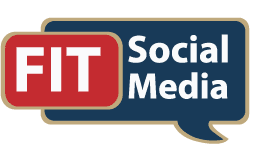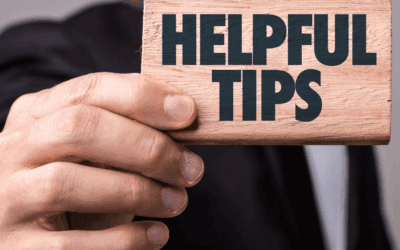So you have everything covered regarding your business, which is great! There’s just one thing you are not sure about, regarding your business’s online presence on social media… What social media platform do you use? To give you an idea of the most popular social media networks, according to Statista (an online statistics, market research and business intelligence portal), here is a summary table they compiled showing the social network sites worldwide as of April 2017, ranked by number of active users (in millions):
Which social media platform?
So, you hear from others “Oh, you have to be on Facebook!” or “Need to be on Twitter!“, “Instagram is so important!“, “Are you not on Pinterest?“, “Oh, my business is on Linkedin as it’s the best platform!“, “What do you mean you are not on Snapchat?” and “Google+ is great for my business“…. the list goes on… And you feel “Eek! What should I be on?”. Don’t worry, as there is a way to figure it out and take away the stress of wondering, which platform or platforms are best for your business. Each business is different and that is why certain businesses find that one or two platforms work better for them, than other platforms do. Social Media used effectively can help increase your sales (including being able to re-market to previous customers), encourage new customers, improve brand loyalty and your online reputation, as well as, if you have a website increase traffic to it. So all in all, social media can help increase your visibility when people are searching online for services and products they want or need. So let’s look at a couple of “Pros and Cons” of each of the following platforms to give you a “general overview” and hopefully you will be able to decide, which are for you:
Pros:
- Facebook is the most popular social media platform, worldwide, there are over 1.94 billion monthly active Facebook users for March 2017.
- You can build a community (customers, potential customers, and fans) on Facebook.
- Marketing on Facebook has a lower cost than other media and allows for targeted advertising.
Cons:
- A Facebook page needs to be managed and that takes time.
- Need to have a consistent content and marketing strategy.
- Your posts reach won’t always show up on your audience’s news feed so need to advertise.
Pros:
- Twitter is a very popular social media platform to reach out on, as of the first quarter of 2017, it averaged at 328 million monthly active users.
- Twitter is a great platform for reaching out to the four corners of the world in real time.
- You can easily track data, which you can use them for targeting your ads.
Cons:
- The time input required for Twitter may not give enough ROI for a small business.
- Each tweet only allows 140 characters which may be too restrictive for your business.
- Twitter followers can “follow” you one minute, then “unfollow” you the next, so not a guarantee.
Pros:
- Instagram is a platform that is growing very quickly, there are about 700 million monthly active users on Instagram.
- It gives your audience a visual impression of your business (remember “a picture says a thousand words”).
- Using the correct and relevant Hashtags for your business will help you be more visible.
Cons:
- Your targeted audience may not have an Instagram account.
- Images have to be posted via a mobile phone or via a desktop third-party tool.
- Can’t have clickable links in your captions (only in your Bio) and not everyone goes looking.
Pros:
- Pinterest is a social network that allows users to visually share and discover new interests and there are about 150 million active monthly users on Pinterest.
- Images are called “Pins” which people collect by pinning on boards, these images can be of products or services, which are connected to websites or other social media pages which can help a business be found.
- People are visually orientated and so having high-quality images of your products and services will help encourage people to become customers.
Cons:
- Depending on your business, Pinterest is more of a lifestyle platform and so may not be suitable.
- Business accounts generally need to share between a minimum of 5 and 20 relevant pins a day to get one of their boards noticed and if you have more than one board that can take some time.
- Good content for Pinterest means you must have high-quality images, in order to get you noticed, otherwise it doesn’t give a good impression of your business.
Pros:
- LinkedIn is a business and employment-oriented social networking service that operates via websites and mobile apps, with about 106 million active monthly users on LinkedIn.
- It can help build good networking opportunities, by having related posts on the platform for sharing, researching and it can provide credibility for a business and enhance its visibility.
- Regarding marketing your business with LinkedIn, you can host an event, connect with LinkedIn Groups and use the advanced search to find the relevant people to approach.
Cons:
- Not everyone is active on LinkedIn and it can take a good bit of time to make connections.
- More for B2B (business to business) sales rather than B2C (business to consumer).
- When creating ads for LinkedIn, be aware of your target audience and create your content to be more business orientated.
SNAPCHAT
Pros:
- This social media platform is growing rapidly driven mainly by a young demographic, with about 300 million active monthly users.
- You can create great visual content (video and images) using your phone for marketing your service or products and with the use of text and geo-filters, with these posts (called Snaps) you can achieve a stronger image of your business.
- You can engage, personally, with your followers and customers in various ways, such as showing them “behind the scenes” of your business or getting them to share their snaps, of your business, products and services, leaving them wanting to know more.
Cons:
- There is no liking or sharing as you would see on other social media platforms.
- Snap videos only last up to 10 seconds, but when you add it to your Stories, the Snap lasts up to 24 hours and then it is gone.
- With social media, you need to be consistent and with Snapchat you need to come up with engaging content, which will keep followers wanting to watch your story until the very end.
GOOGLE+
Pros:
- Google+ (Google Plus) is an “interest” based social network that is owned and operated by Google with over 300 million monthly active users.
- Google+ is great for local SEO and as it’s Google operated, it will help with your rankings in a search on Google.
- It’s very easy to use, basically individuals and businesses connect through circles. As you add to your circles, you can separate followers into relevant groups, like “Customers” and “Suppliers”.
Cons:
- Google+ is not as popular as Facebook or Twitter, so not a wide audience.
- With it not having a wide audience, time spent on this platform may not give a good ROI.
- Unfortunately, you can’t have any contests or promotions on Google+, unlike other social media platforms.
To conclude…
Regarding Facebook, Twitter, Instagram, Pinterest, LinkedIn, Snapchat and Google+ etc…., it all comes down to where your audience and target market is likely to be, what your business is and how comfortable you are using a platform, as it’s a challenge to be on all social media platforms at the same time. Remember with any social media platform you are on, you need to be active, show who you are in a positive and relevant manner, be aware of your audience and don’t forget you need to monitor for any comments, as social media only works if you are committed. If you would like some more advice, need help or training you can get in touch “here” with us.





0 Comments